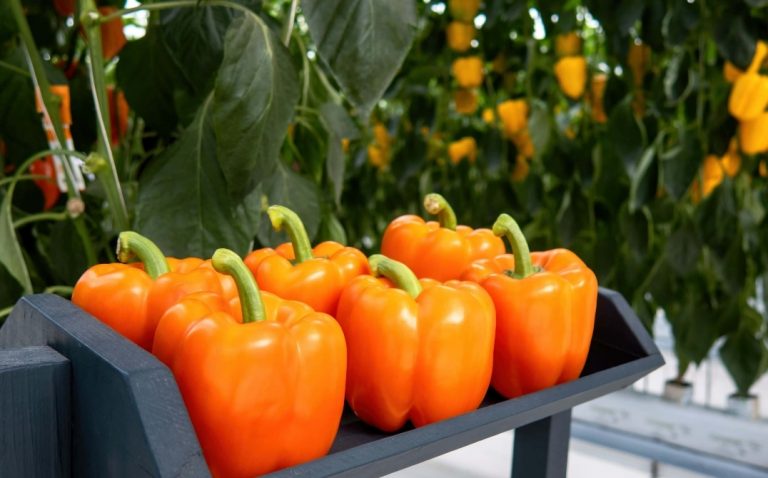Greenhouse grown tomatoes are playing a crucial role in shaping a more sustainable diet by offering an eco-friendly, nutrient-dense, and resource-efficient alternative to traditional field-grown produce. As the demand for fresh and environmentally responsible food choices continues to grow, greenhouse growing provides a solution that supports both human health and planetary well-being. By reducing food miles, optimizing water usage, minimizing pesticide exposure, and ensuring year-round availability, greenhouse grown tomatoes are an essential component of a sustainable food system.
Reducing Food Waste and Carbon Emissions
One of the biggest environmental challenges in modern agriculture is food waste and transportation emissions. Field-grown tomatoes often need to be harvested early and shipped long distances, increasing spoilage rates and carbon footprints. Imported tomatoes, for example, travel thousands of miles from warmer climates before reaching grocery stores, requiring refrigeration and fuel-intensive transport.
Greenhouse grown tomatoes, however, are often cultivated closer to urban centers, reducing transportation emissions and ensuring fresher produce with a longer shelf life. Since they are vine-ripened in a controlled environment, they develop better texture and flavor, making them less likely to be discarded by consumers due to poor quality. By growing sustainably, greenhouse operations help cut down on both food waste and greenhouse gas emissions.
Water Efficiency and Conservation
Agriculture is responsible for nearly 70% of global freshwater use, with traditional farming methods often leading to excessive water consumption and runoff pollution. Field-grown tomatoes require significant irrigation, and much of this water is lost to evaporation or absorbed by weeds, reducing efficiency.
Greenhouse tomato production, especially hydroponic and aquaponic systems, uses up to 90% less water than traditional soil-based farming. By recycling water in a closed-loop system, greenhouses ensure that every drop is used efficiently, preventing waste and contamination of water supplies. This water conservation method makes greenhouse grown tomatoes a sustainable choice in regions facing water scarcity.
Minimizing Chemical Use and Pesticide Exposure
Pesticides and synthetic fertilizers are commonly used in open-field farming to combat pests and diseases. However, these chemicals can negatively impact pollinators, soil health, and water quality, while also leaving residues on produce.
Greenhouse growing significantly reduces the need for pesticides by creating a controlled environment that naturally deters pests. Many Greenhouses use integrated pest management (IPM) techniques, such as:
- Introducing beneficial insects like ladybugs and predatory mites to control harmful pests.
- Using physical barriers that prevent pest infestations.
- Implementing natural fertilizers and compost-based nutrients to enrich plant growth.
By choosing greenhouse grown tomatoes, consumers reduce their exposure to harmful chemicals while supporting eco-friendly growing practices.
Sustainable Land Use and Higher Yields
Traditional agriculture requires large amounts of land to grow crops, contributing to deforestation, habitat destruction, and soil degradation. As demand for food increases, the pressure on arable land continues to rise, leading to unsustainable farming practices.
Greenhouse growing is highly space-efficient, allowing growers to grow more tomatoes per square foot than in traditional open fields. Vertical growing techniques and hydroponic systems enable greenhouse operations to maximize yield while using less land, preserving natural ecosystems and reducing the need for agricultural expansion. By optimizing vertical space and controlled nutrient delivery, greenhouses produce higher-quality crops with minimal environmental impact.
Energy Efficiency and Renewable Innovations
While early greenhouse operations were often criticized for their high energy consumption, modern sustainable greenhouses are now integrating renewable energy solutions to minimize their footprint. Many commercial greenhouses are adopting:
- Solar panels to generate on-site electricity.
- Geothermal heating for temperature regulation.
- LED grow lights to supplement natural sunlight without excessive energy use.
These innovations help reduce greenhouse gas emissions, making greenhouse grown tomatoes a more sustainable alternative compared to traditionally farmed produce.
Health and Nutritional Benefits for a Sustainable Diet
A sustainable diet isn’t just about environmental impact—it’s also about ensuring access to nutrient-dense, wholesome foods that support long-term health. Greenhouse grown tomatoes offer a rich source of vitamins, minerals, and antioxidants, including:
- Lycopene, a powerful antioxidant that supports heart health and cancer prevention.
- Vitamin C, which boosts immune function and skin health.
- Potassium, essential for muscle function and cardiovascular health.
- Dietary fiber, promoting digestive health and weight management.
Since greenhouse grown tomatoes are vine-ripened and harvested at peak ripeness, they retain higher nutrient levels compared to imported, artificially ripened varieties. This makes them an essential part of a balanced, sustainable diet.
Supporting Agriculture:
Greenhouse grown tomatoes contribute to stronger food systems, supporting small and medium-sized greenhouses while reducing dependence on imported produce. By choosing greenhouse tomatoes, consumers help:
- Reduce global food transportation emissions.
- Support regional economies and job creation.
- Encourage sustainable growing practices that prioritize environmental and ethical responsibility.
As consumers become more conscious of their food choices, greenhouse grown tomatoes provide a healthier, more sustainable alternative to conventionally farmed produce.
A Future Built on Sustainable Agriculture
Greenhouse tomato growing represents the future of sustainable agriculture, offering a solution to food security, environmental conservation, and responsible nutrition. As climate change continues to challenge traditional farming methods, controlled-environment agriculture (CEA), including greenhouse production, provides a resilient, efficient, and scalable way to grow fresh produce while protecting natural resources.
By integrating water-saving techniques, pesticide-free growing, energy-efficient technologies, and food systems, greenhouse grown tomatoes are leading the way toward a more sustainable, healthier future.




